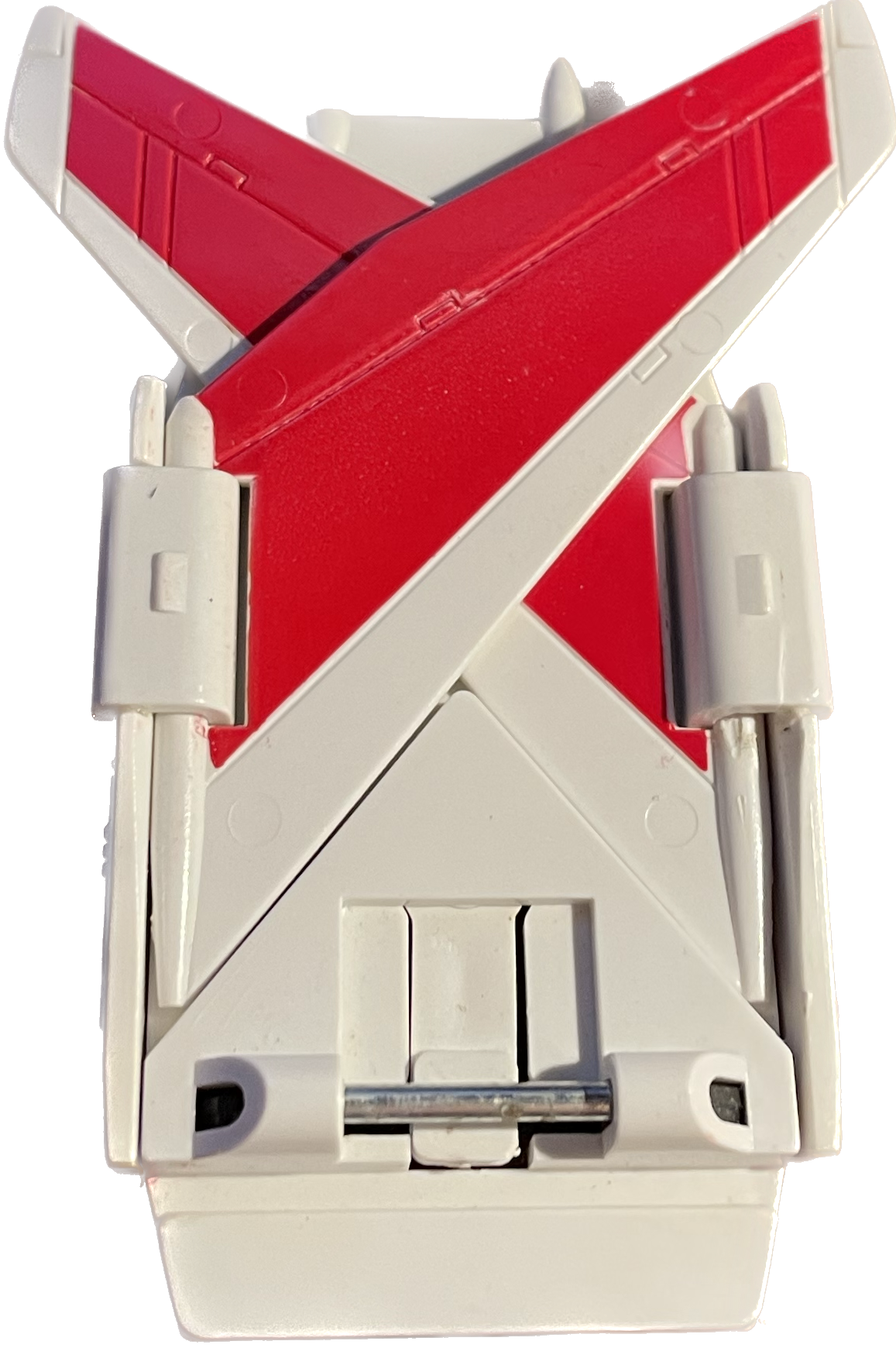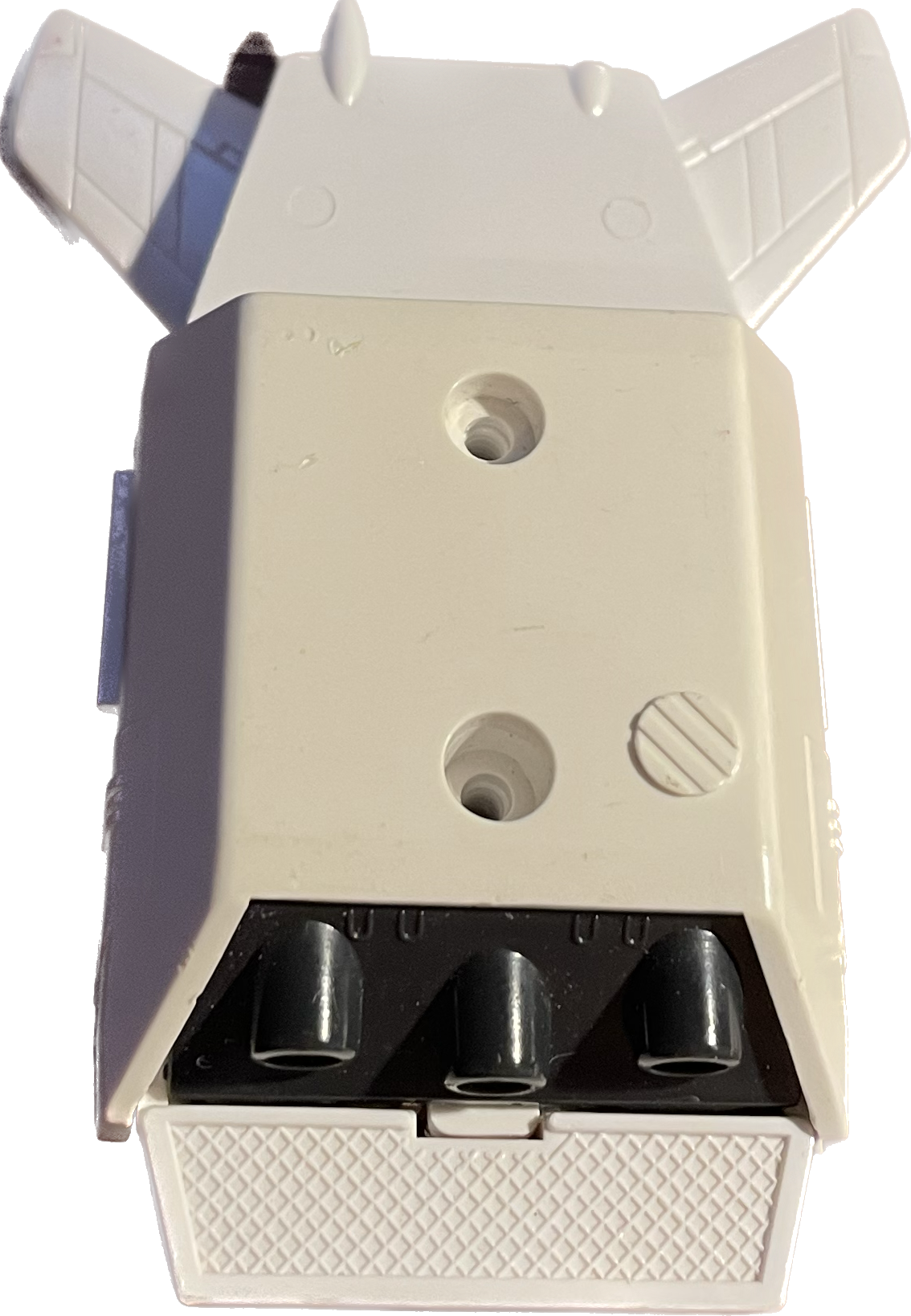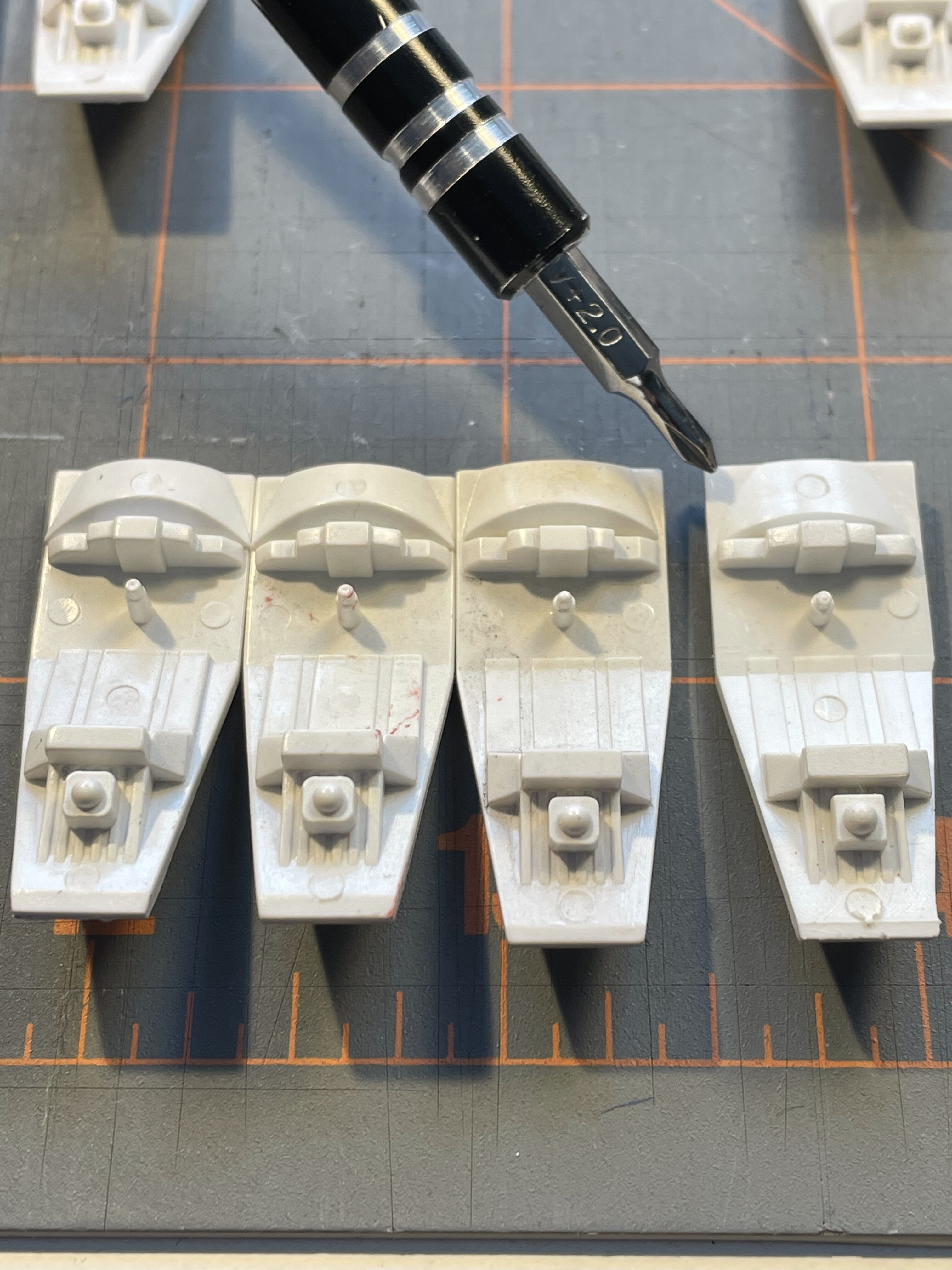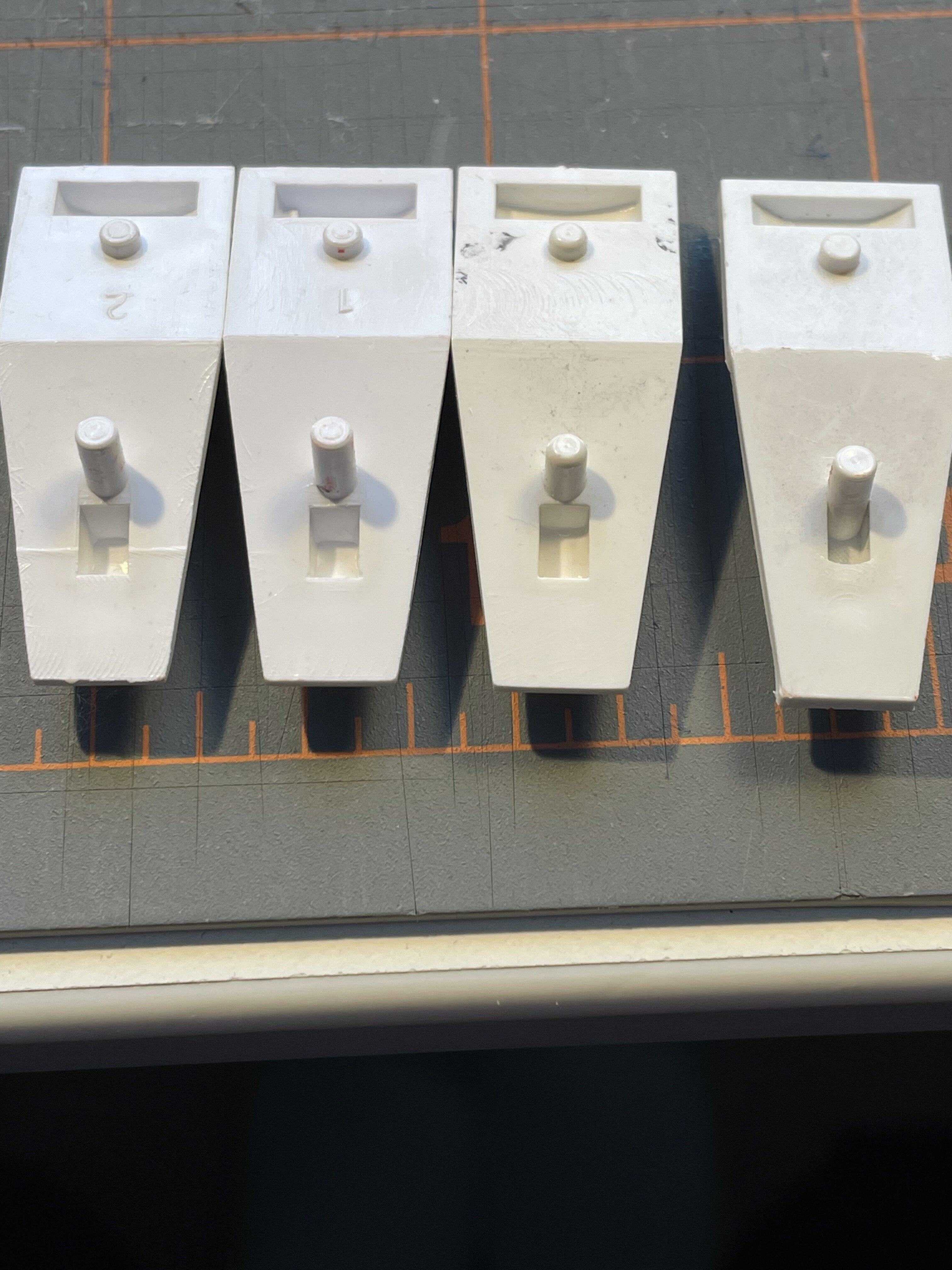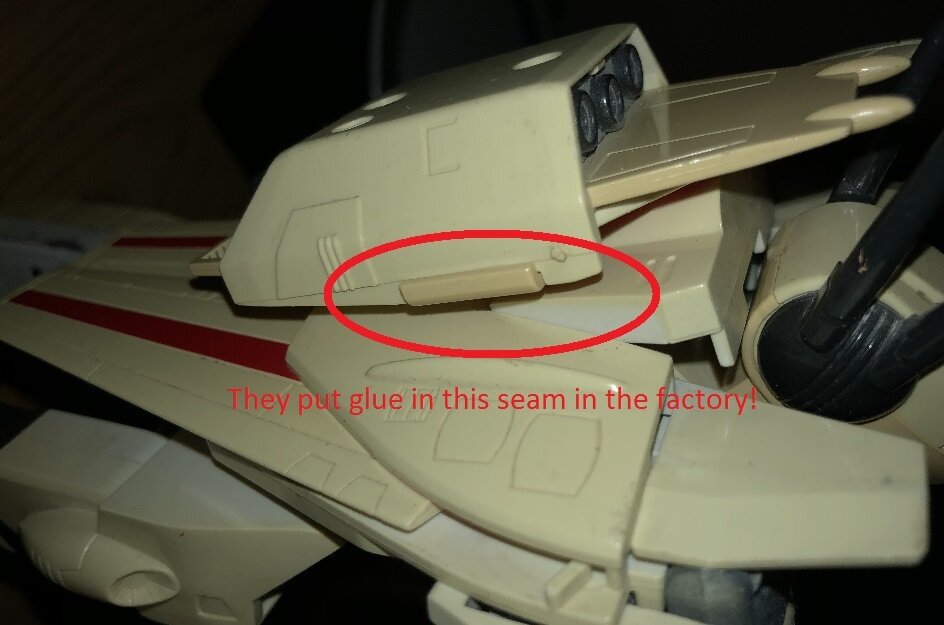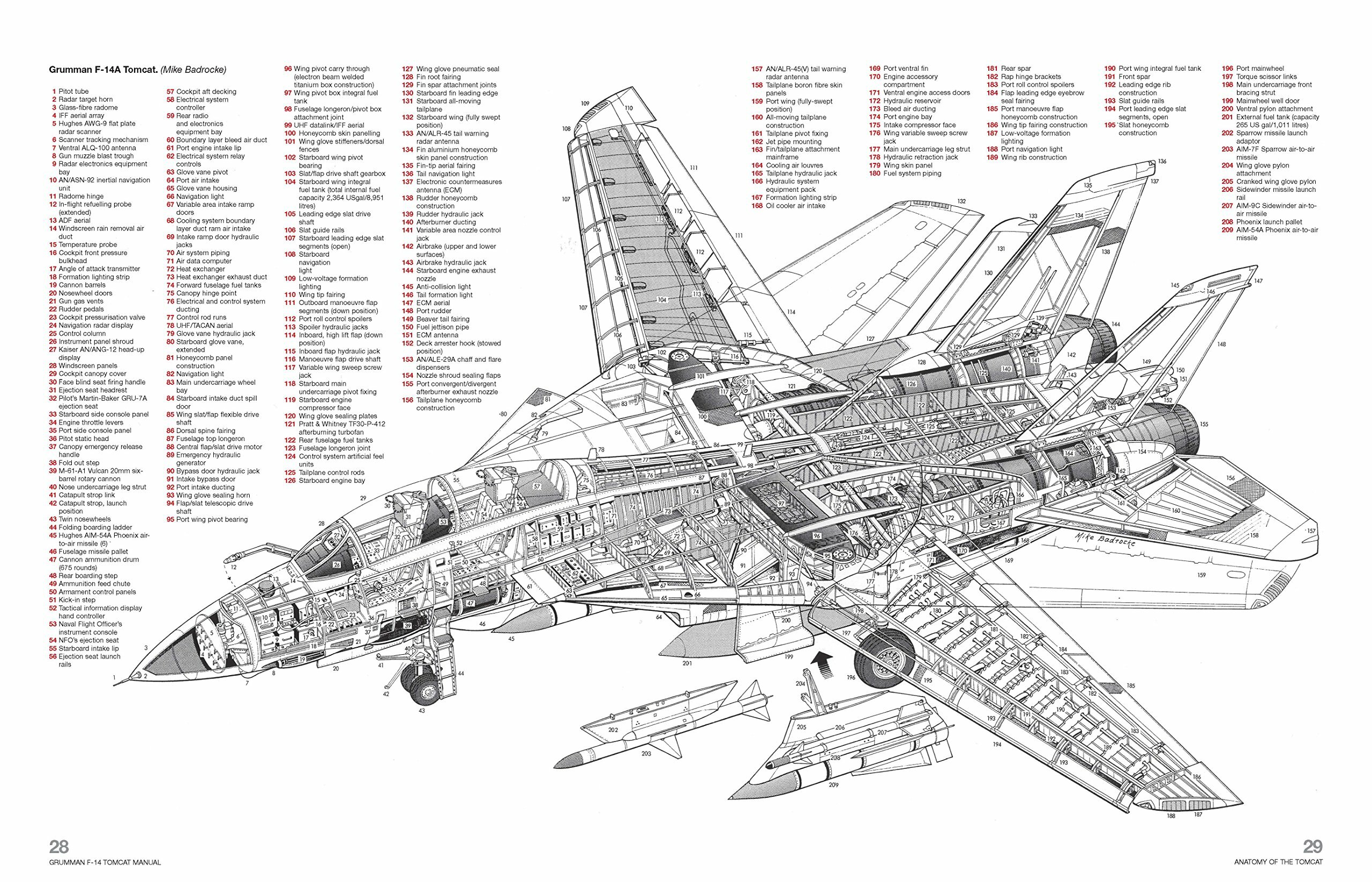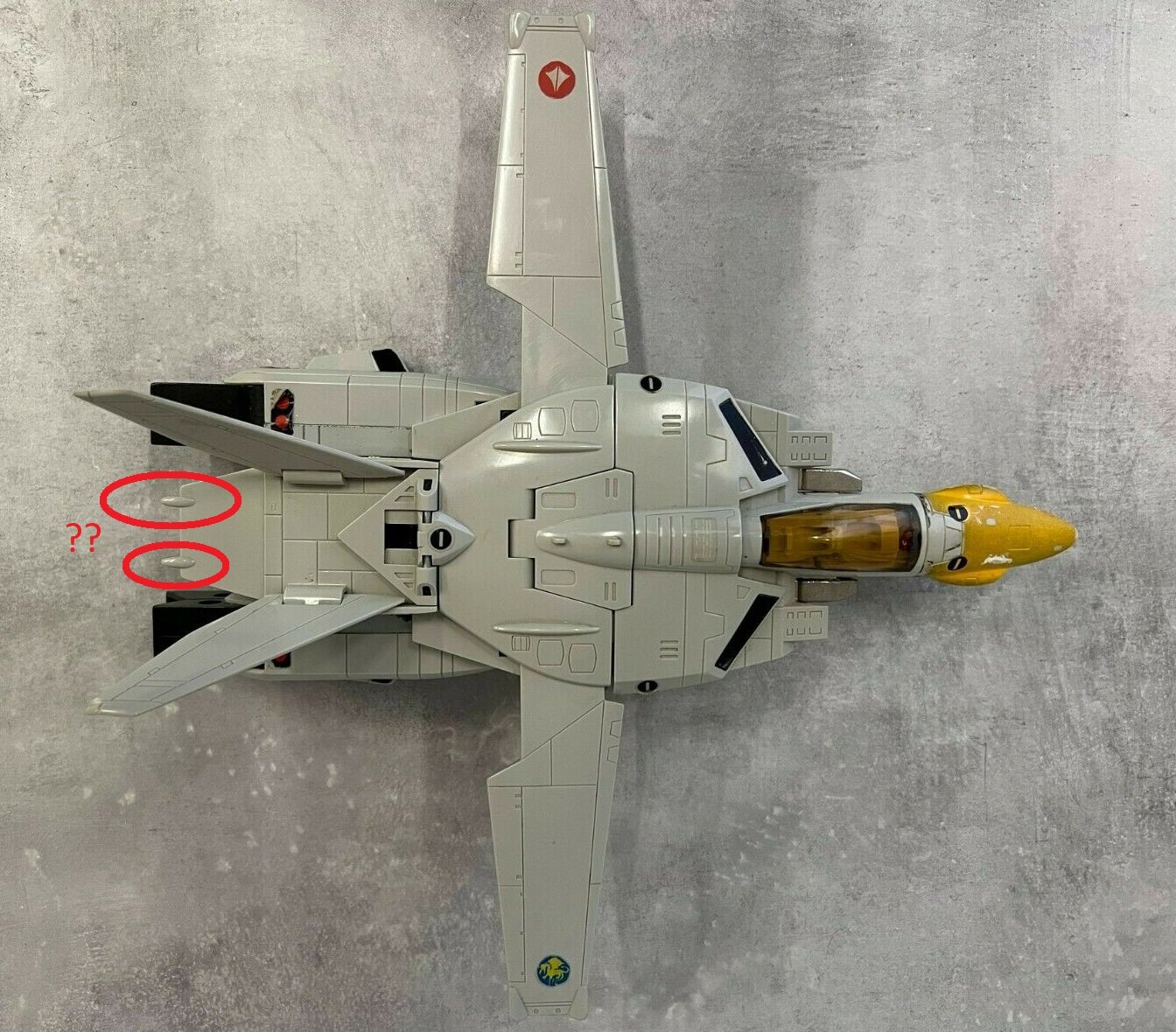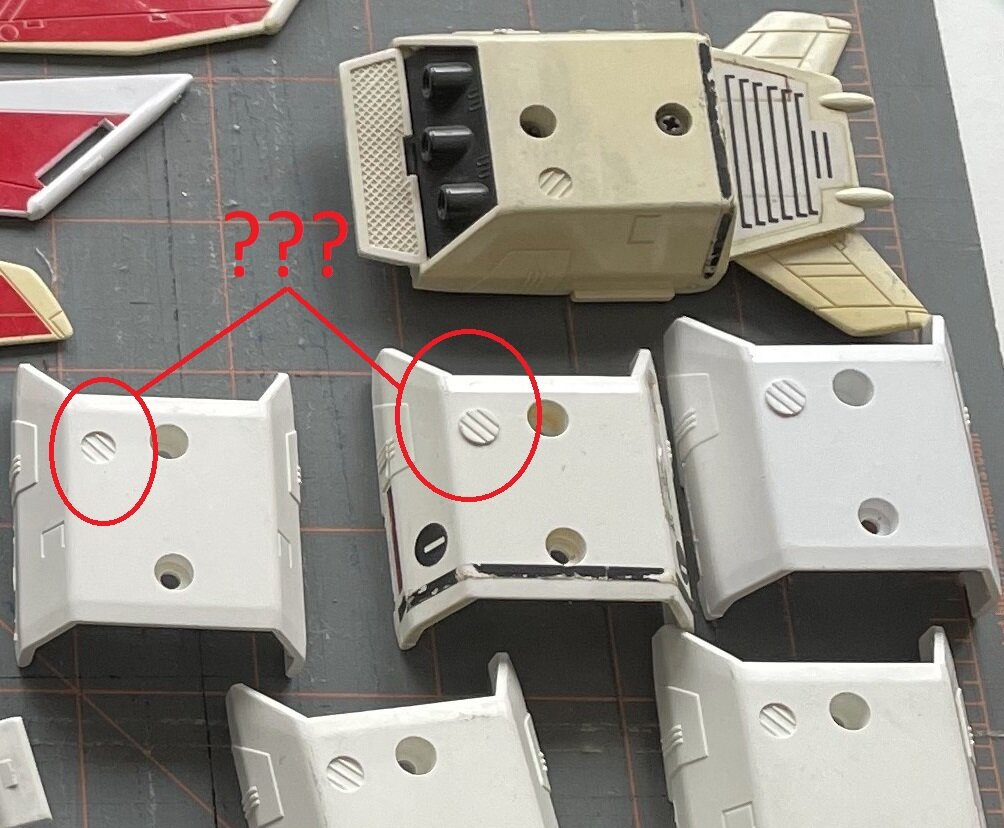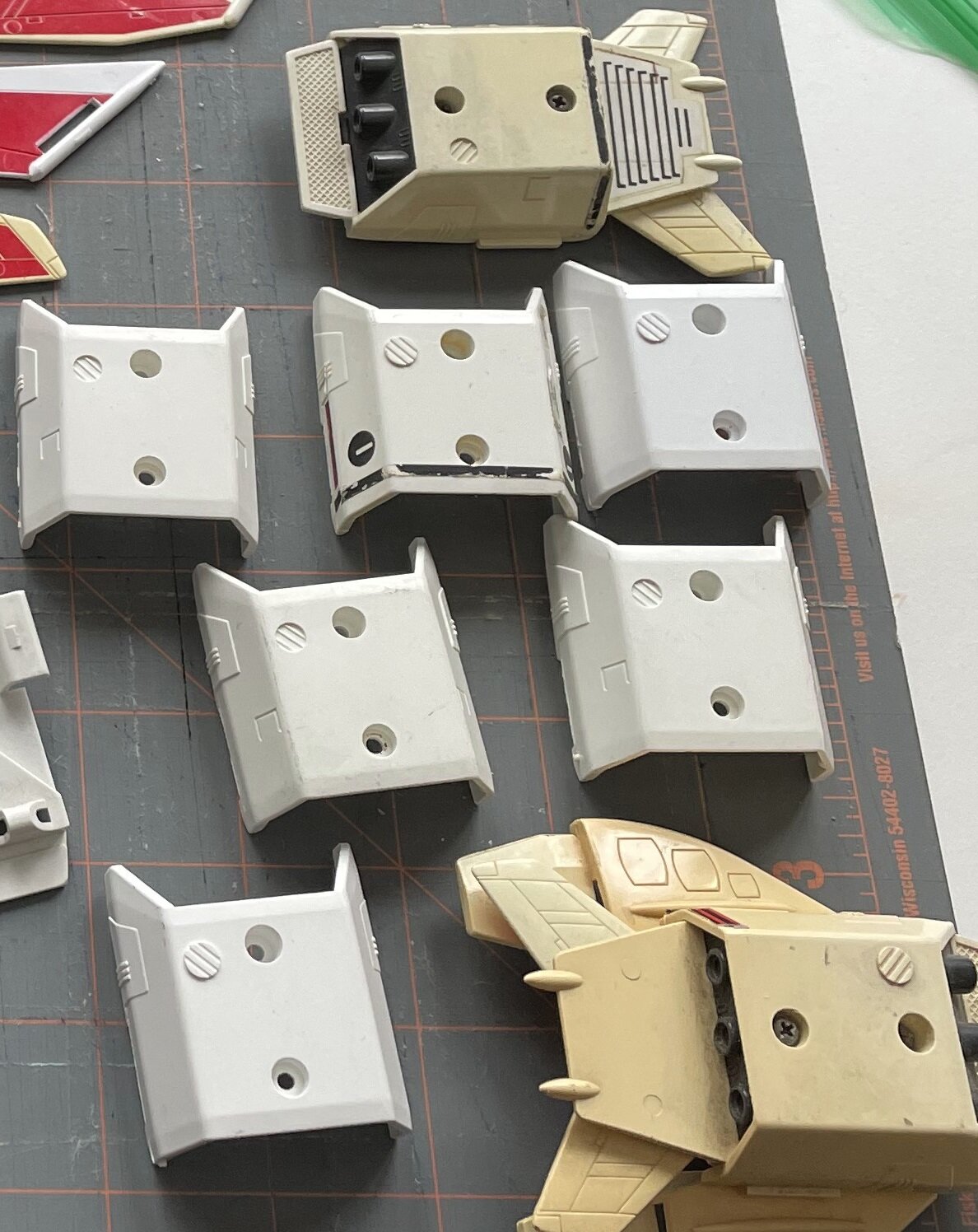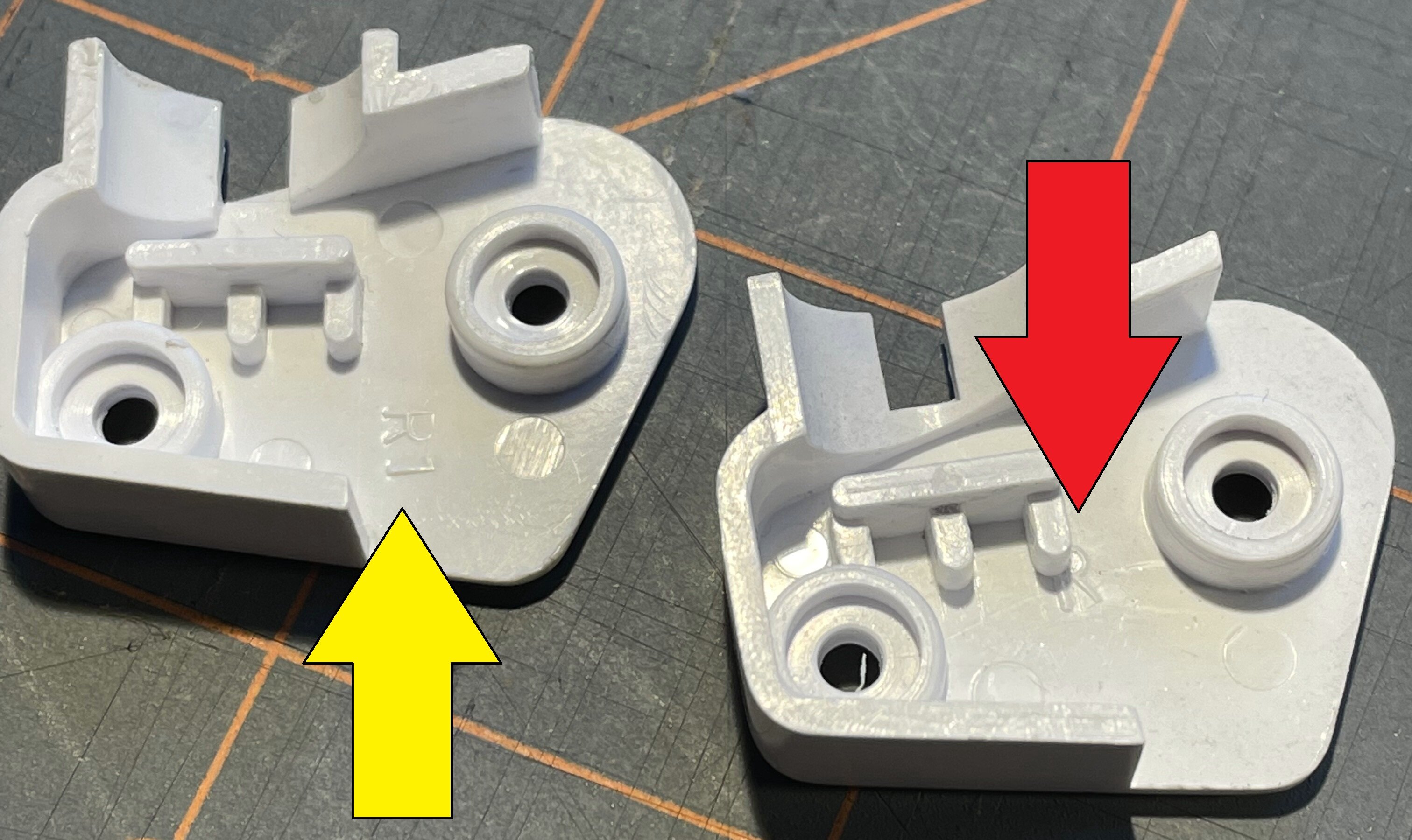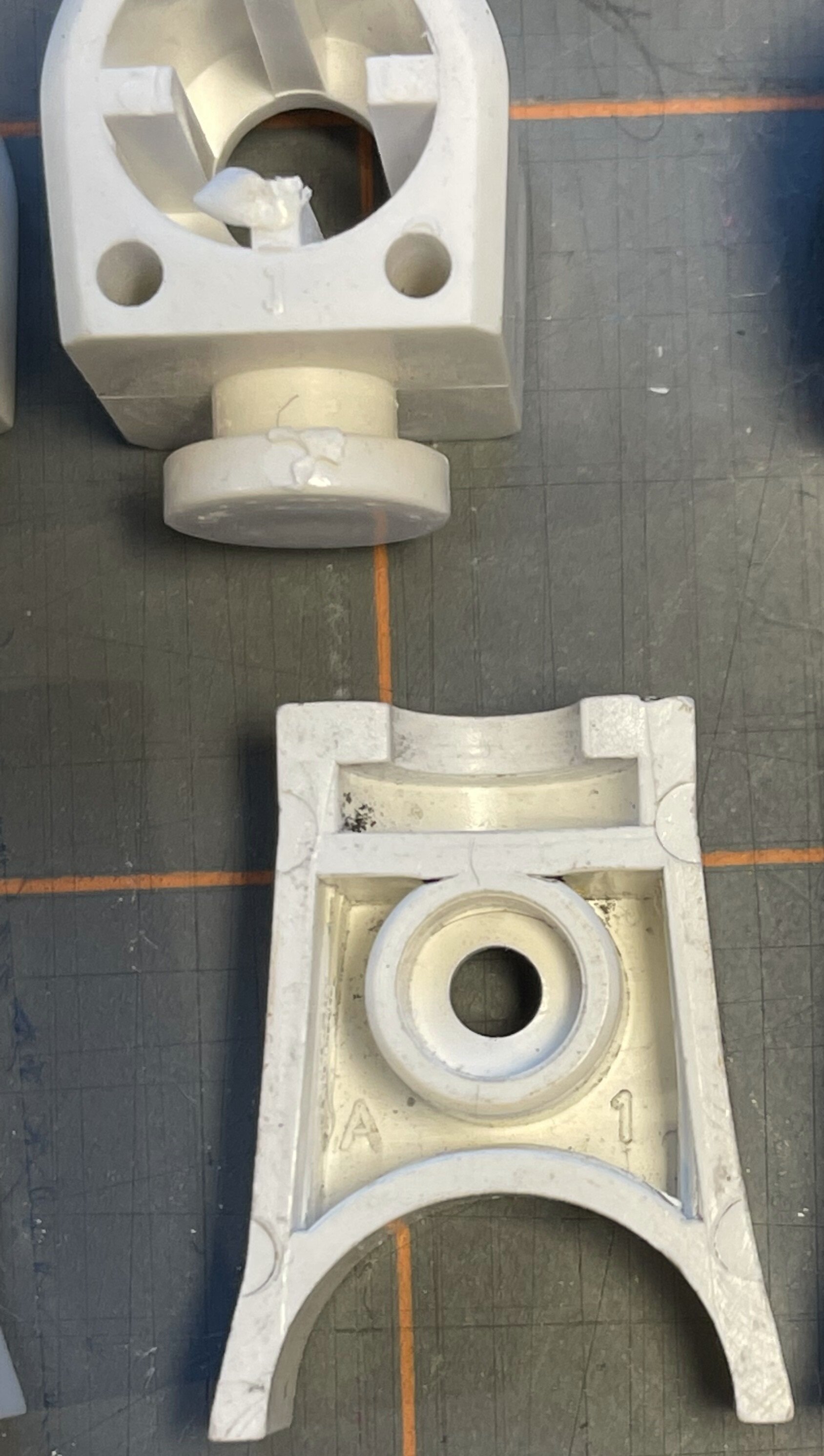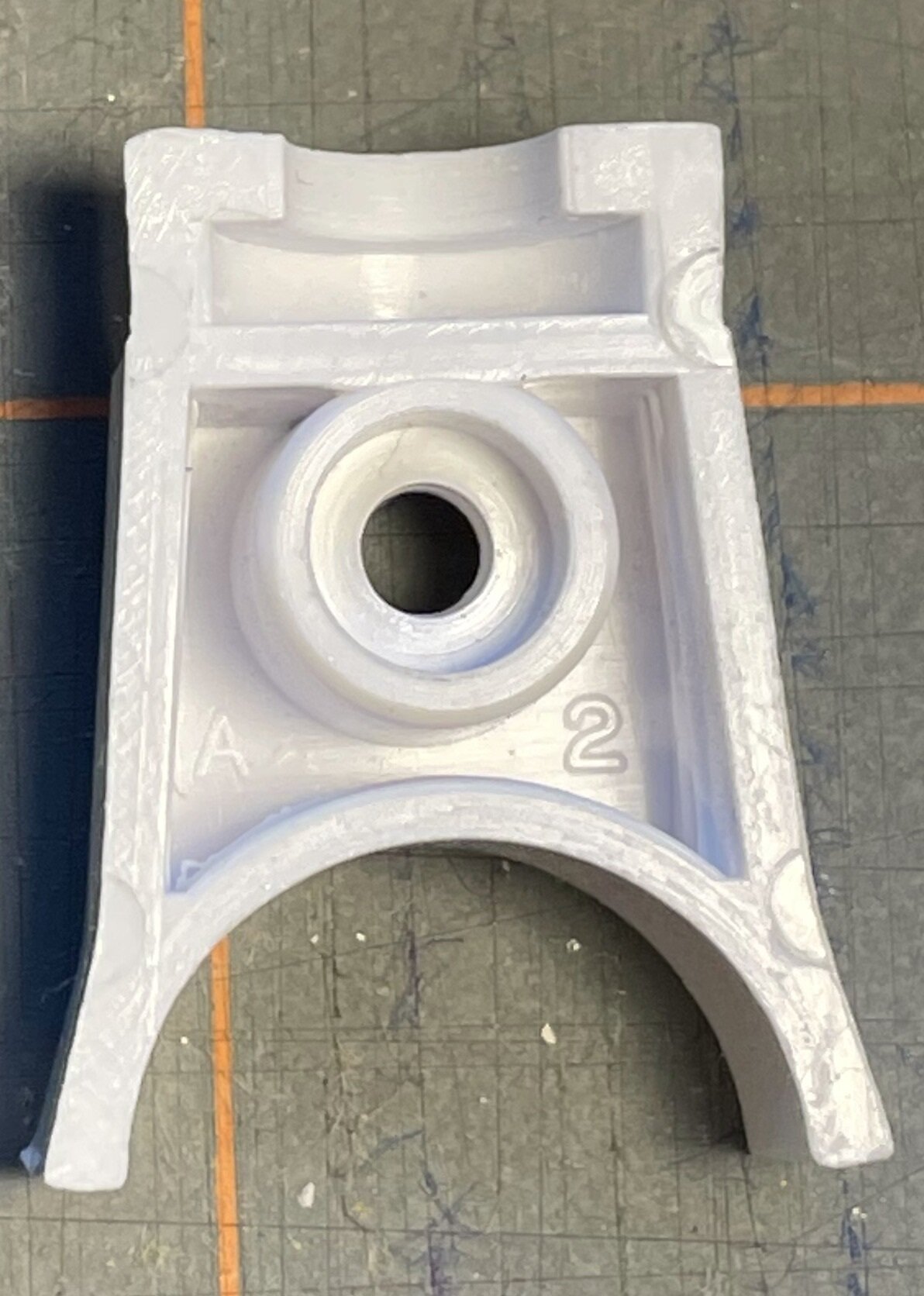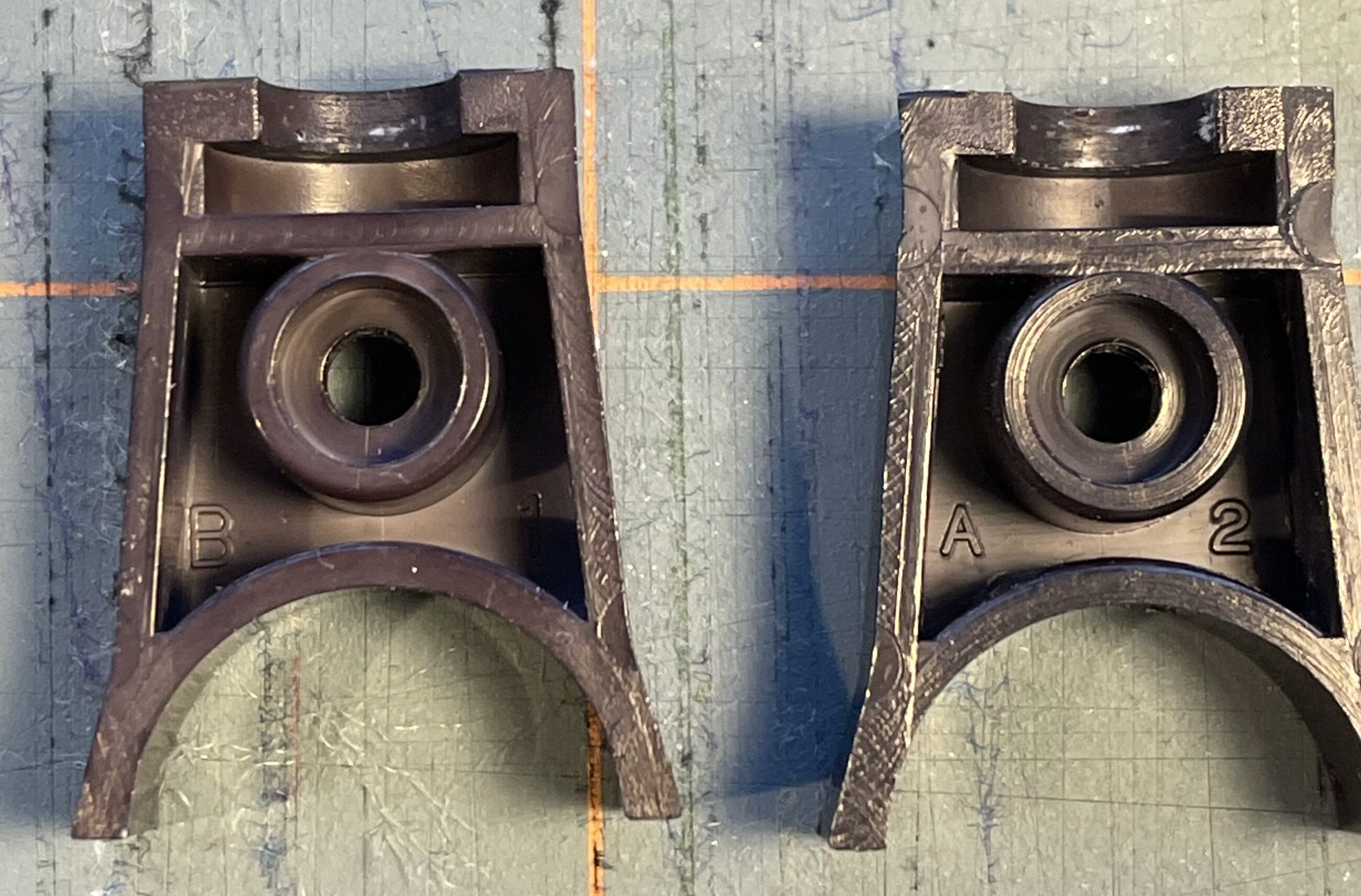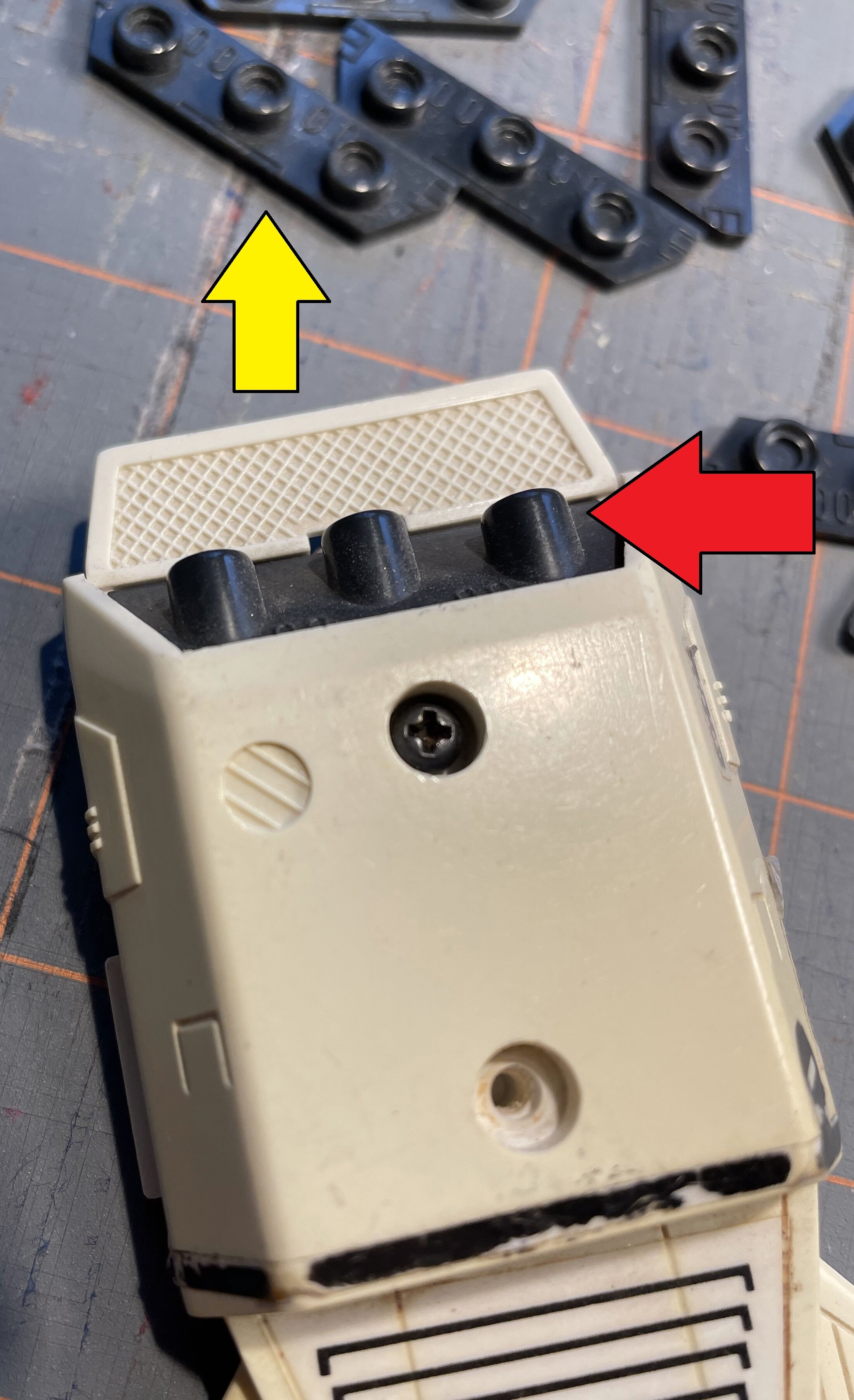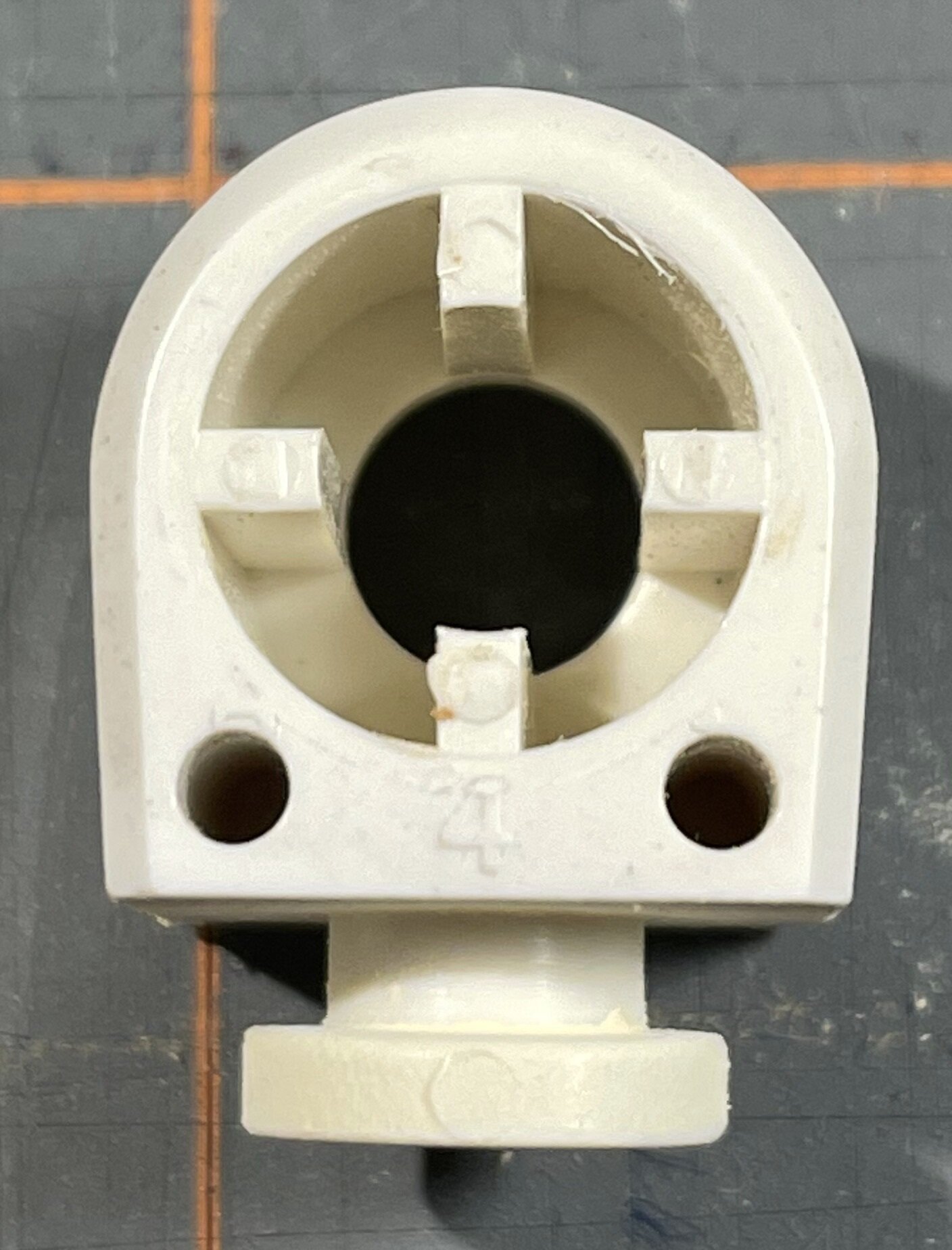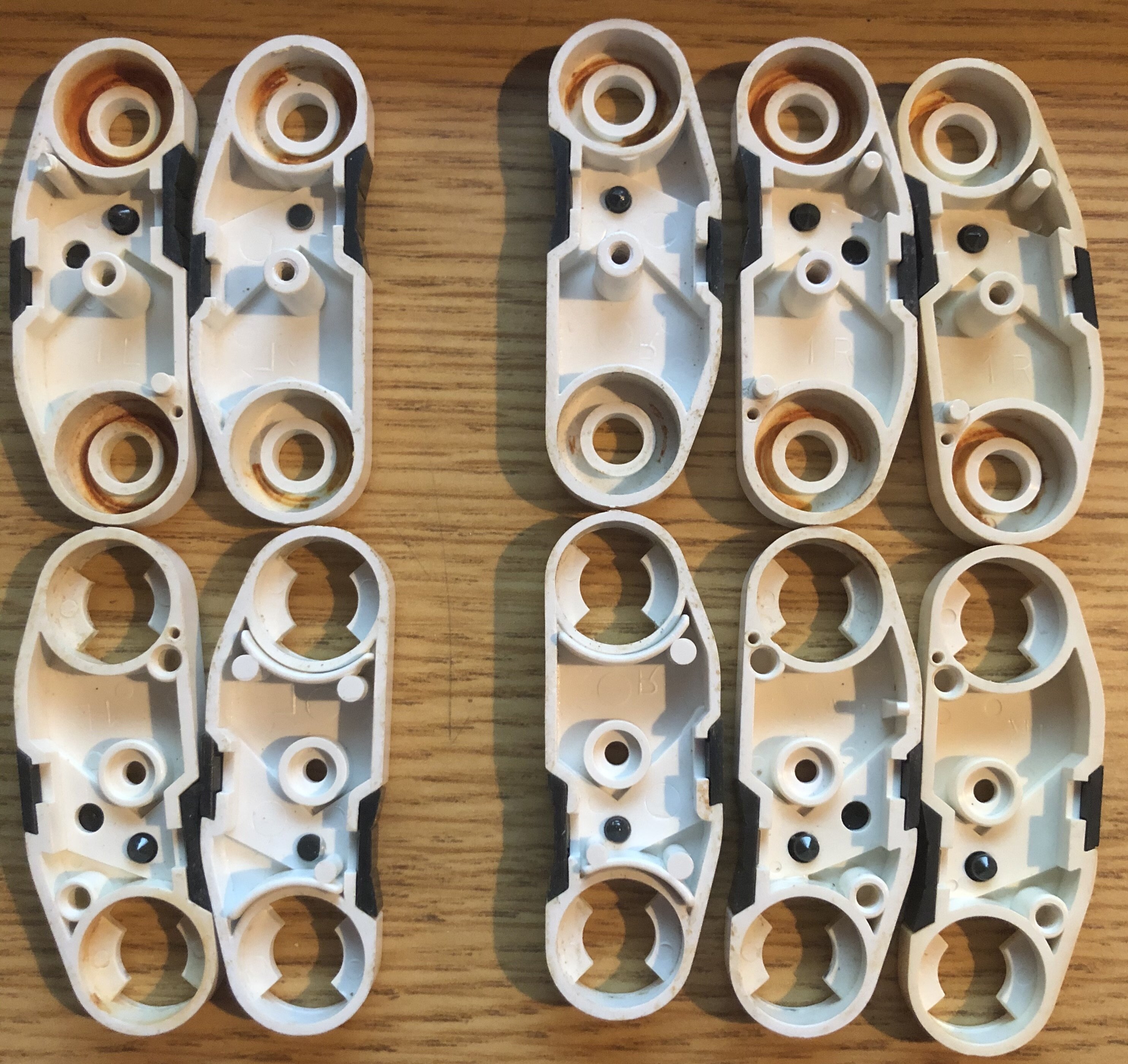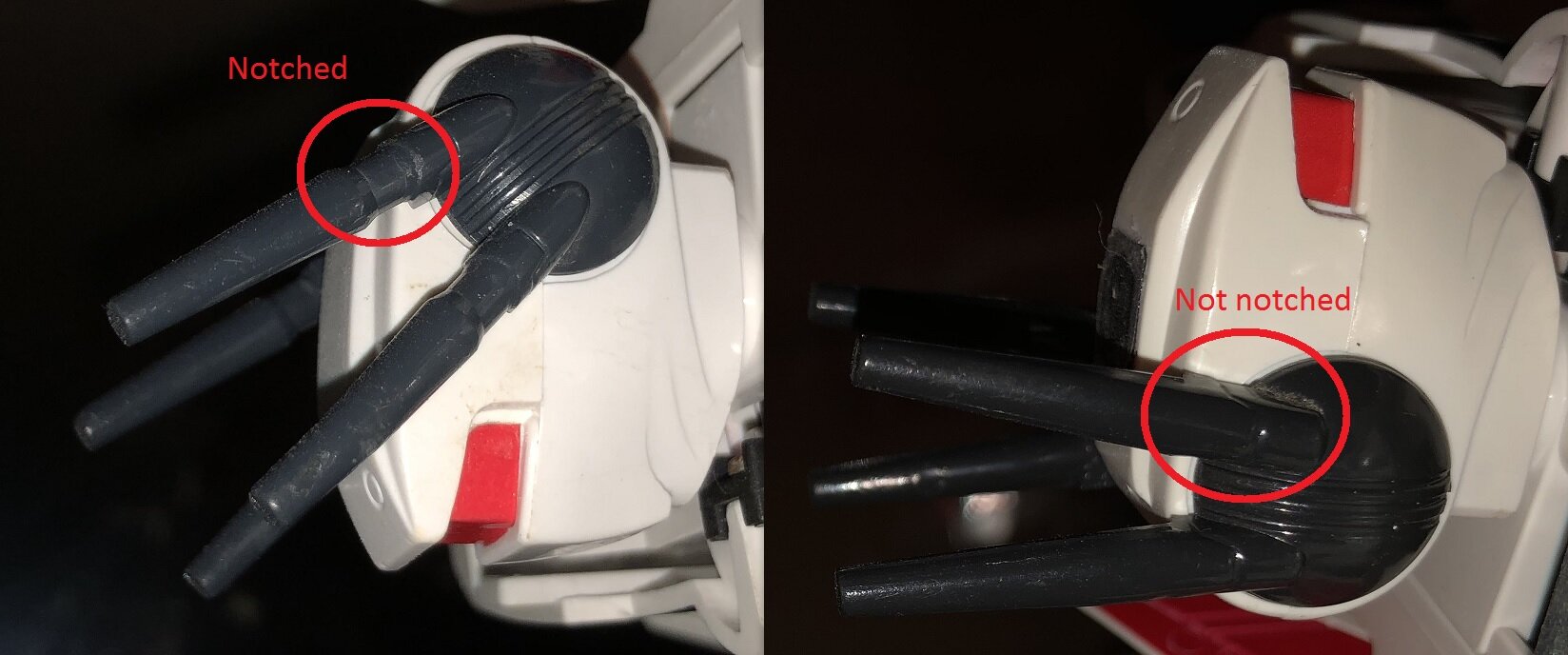

GrampaStump
Members-
Posts
20 -
Joined
-
Last visited
Content Type
Profiles
Forums
Events
Gallery
Everything posted by GrampaStump
-
Any advice on how to crack open a VF-1 tail section when the seams between the "back shell" and the "tail plate" are glued down really solidly? I've done it many times, and the advice I have given people is that I soak the joints in Goo Gone - even though I'm not sure if that actually accomplishes anything - and then carefully, slowly, attack it with a sharp hobby knife. The thing is, I haven't done it in a couple of years, and I have a few that I'd like to get apart... and I'm very nervous! I'm not great with the hobby knife, so sometimes I make unpleasant gouges (that probably only I notice), and sometimes flakes of plastic from the tail plate break come off, stiuk to the back shell, when it finally breaks apart. I have found some that with age and wear have naturally popped apart beautifully... I've also found some that seem to have escaped being glued in the first place at the factory. But for the rest of the cases, I just don't know how to approach it with confidence, and would be thrilled if one of you had a "OMG THIS IS SO EASY ONCE YOU KNOW THE TRICK!" technique to offer.
-
Are you are saying that part of the reason you pay for grading is because they put it in acrylic and that reduces yellowing? You can reduce yellowing without paying a grading company for an acrylic box. You can keep it out of heat and sun light, you can put it behind glass (plain old glass is pretty decent at blocking UV), you could maybe even put a sealant on it. There are options that don't involve joining the grading game!
-
That is amazing. I always knew that Matsushiro sold them out the backdoor on the gray market, and that many of the high quality vintage bootlegs were so high quality because they were literally the real authentic product, but I never before realized they actually did it with their name on the box! That's great. And the TT sticker sheet is not a surprise; Matsushiro was contracted by TT to manufacture them, so all of their sticker sheets would probably have been from TT (unless they manufactured their own stickers?). Great pictures!
-
Transistor Robots Mr. Hard Hat series. I believe the red head came in the "giftset" and the blue head came in the individually sold Excavator-Man (or I might have that backwards, or perhaps it was random, I'm not really sure). Edit: Sorry, I see it was already answered. But I knew it right off the top of my head, if that counts for anything!
-
Actually of the 3 on the left, the one with no number comes from a Jetfire based on the original Takatoku VF-1J mold. The two with numbers come from Jetfire based on the newer (but still from 1985) Bandai created molds.
-
If nobody knows, or nobody is interested, that is fine, but if my message above isn't clear, or if you can't see what is different in the picture about the one cockpit piece I'm asking about, just let me know and I'll try to provide better details. (If only Bandai would dig out the original wooden VF-1 prototype!)
-
Speaking of Jetfire cockpits, I received a big batch of Jetfire parts, and I noticed 1 cockpit that does not look like the others. Can anyone identify this one? It might be from a KO I am thinking, because it has a different shape than all the other Bandai versions I've seen. The difference may be subtle, but it is pronounced - a rounder front with different angles than the others. See the pictures. Thanks.
-
Often the thruster shell is glued to the tail plate. Sometimes it cracks loose easily, other times it doesn't. I have more than one that someone else broke trying to disassemble. Has anyone perfected a method for separating them? I have soaked the seam in goo gone, reapplying every once in a while for a day or two, and then used a very sharp razor blade to get them apart. I've also managed it without any tools, just being a little forceful with it, but that seemed awfully risky. I haven't done it enough times to really get a sense for whether the goo gone actually helped. It isn't easy, any way you slice it (pun always intended). Very easy to cut into the plastic with the razor, or break the shell if you rush it. If the goo gone actually works, I'm thinking that the best way to do it would be to build a little jig to put the whole assembly into, soak it with goo gone for longer than I have ever done it (patience!), then tap it apart with a soft mallet - no knife involved. Am I reinventing the wheel? Has someone out there already perfected this? Also, secondary question, is there rhyme or reason to which ones are glued and which ones are not? Possibly early ones / Takatoku had no glue, but Bandai do? Not sure...
-
Very interesting. Those drawings could be very useful. In this case, I don't think I'm going to call that part "FC" because I'd rather use a word, but its a good starting place. I looked at the schematics of an F-14 Tomcat (which I believe is the primary inspiration for the Valkyrie in fighter mode) and found something that looks very similar on the rear vertical stabilizers that are called the electronic countermeasure aerials (or ECM aerials, for short). So think I've got my name!
-
Initially I wasn't going to bother giving names to these parts, because they aren't particularly prone to breaking, but then I just found one today broken off and figured what the hell, might as well have a name for it. (The little points that stick off the back of the tail plate, circled in the picture below!)
-
Here is one I never thought about before. What do you call the roundy thing on the back that pokes out on the original models, and in on some of the newer ones?
-
I'm not trying to give the BOM a 5 year old comprehension level, but I do want it to be a common language we can all communicate in clearly. Maybe more like 18 years / no college required. Simplicity is a factor, but not the only factor. Sometimes a clear and simple word will be a good stand-in for a more technically accurate phrase that is uncommon and/or long. I appreciate the input, though. And maybe I'm wrong, but perhaps you were subtly teasing me ("...already in your notes"), in which case, bonus points! I totally love it. (But if you were being earnest, that is fine too!) So back to the "shell" piece. You're right that shell doesn't give any clue as to where it goes or what it is. I had been using both backpack and jetpack, but the reason I want to get away from both of those terms is that they seem kind of childish. One makes me think of a kid wearing a backpack walking to school, and the other a rocket pack that a sci-fi nerd would build in his garage to fly around and bounce off the walls with. Maybe back shell? Or jet shell? I've got the overall BOM finished now, all parts listed out, the most commonly broken components of the parts also given their own names. I'm just working out a few details, like renaming the backpack, and figuring out if the landing latches for the front landing gear are identical to the ones on the back (I think so, but want to confirm), and a few other details like that. Once I get it all sorted out, maybe I'll post it here for anyone who is interested to give feedback... or start using if/when they discuss parts of a 1/55 Valkyrie!
-
I agree, I think about exactly that issue of priority when naming some of these less obvious parts. In this case, you could be reading from my own notes. Empennage vernier thrusters were all there. I also thought about how in space these might be called maneuvering thrusters. Ultimately I thought in this instance simpler would be better, and I was hoping to come up with a 1 word answer. So that leads me back to thrusters, with the bigger ones being called large and the smaller (flattish panel) being called small. Another piece I'm trying to name is the housing for those jets (see the picture below) - and this one I really have no good airplane or robot-related terms for. I have called the whole empennage area the "backpack" and the "jetpack" at different times, but I don't really like either of those. "Back cap" was my first draft term, and then I changed it to "back shell" or just "shell" in my second/current draft, but I'm open to public input on this one.
-
I have not been able to pin down any regional differences, but there are definitely different revisions to the molds used to create them. The original versions have very few manufacturers marks (like the 4), but some of them do have a number or letter to indicate left or right, most likely to help the assemblers of the toys in the factory. But then they remade the entire mold - every single part changed, some of them non-interchangeably with the original ones. On the new molds, just about every single part does have a mark on it, although typically they are not obvious, usually not visible without disassembly. But this is not unique to Valkyries - if you take apart any mass produced plastic product, you are likely to find marks like this. I took apart some headphones that weren't working, and chuckled to myself as I noted "R15" on the inside of the right ear piece, and "L27" on the left. I assume this is because these molds eventually wear out, and for quality control, they need to know which parts were produced on which molds. The most common mold marks by far are L1 and R1, but there are also L2, R3, and on parts without a left or right, 1, 2, 3, and as I showed in that picture, at least one 4! There are also A, B, C, and sometimes those have a number too. The A, B, C letters are for parts which there are two of, but for which it doesn't matter which one goes on left or right - they are the same on both sides. Here are some pictures, because as I've been told many times, people like pictures not paragraphs! The inner shoulder pieces, the red arrow points to an "R" on an older / Matsushiro / undated Bandai type shoulder. The yellow arrow points to an R1 on a Bandai 1984/1985 type. The upper arm pieces, there is an A 1, A 2, and a B 1. Just ignore that 2 of them are dyed black. It was done after market. I did not do the dying, but I plan to use them. I've always loved the idea of having field-repaired Valkyries with different colored parts, so I don't mind having a few alternate colored dyed parts. Anyway, I have looked at tons of these, so to summarize again, all Bandai 1984/1985 parts have a marking of some kind, and most Matsushrio and undated Bandai that have a left and right part also have a simple L or R marking (or 0 and 1 in the case of the forearms). And presumably as the production runs went on and they needed to make more of them, the numbers and letters incremented. I've even seen examples where one mark appears on top of another - which is odd, considering these are injection molded. And there appears to be a run of metal shoulder hinges where the L and R marking were misapplied and appear on both left and right side pieces. I can believe that is a mistake at the factory, because those parts are very hard to identify as left or right, and I can easily imagine even the people modifying the mold making a mistake. Ah! I've done it again, another paragraph. Now for the pictures.
-
What should we call the three jets/thrusters/engines/turbines/intakes on the front and back of the tail section? See the picture. The red arrow points to the larger ones, and the yellow arrow points to the smaller ones. In my original notes I called them "jets, large" and "jets, small." And maybe that is fine, but I wanted to see if there was something better and/or more authentic. The first alternative I thought of was thrusters, but I think there is a problem with that. I don't want there to be any confusion, and I suspect when people think of thrusters, they will probably think of the giant armor / booster things that attach to the back. Any advise on what these actually are, and what we can call them, appreciated!
-
I don't know about that, I've only been collecting and reading about them for the last 2 years or so. But I can confirm a number of variants. Nameplate (Left side / Right side): -Matsushiro / Tokyo Japan -Bandai / Tokyo Japan -Ban Dai / Bandai 1984 Made in Japan -Ban Dai / Bandai 1985 Made in Japan The thing to remember is, they literally made new molds for every part. So if you have an original Matsushiro and an original 1985, even though there are a handful of obvious external differences, even on other parts that look similar there are differences, sometimes only on the inside, but definitely noticeable if you look carefully. If you were to actually break out a gram scale and calipers, then there would be absolutely no question that they are different, but even I haven't undertaken that task (yet). The obvious external variations within those four groups are these: * Some Matsushiros have head cannons with a wide channel near the base, whereas some Matsushiros and all of the others have no channel, just a vertical groove detail line instead. *** Someone once told me they got an undated Bandai with channeled cannons. While that is totally possible, did it actually come from the factory that way? Doubtful, but I have no definitive evidence either way. * And the big one, some Matsushiros have a painted on roundel on the left wing, others have a roundel sticker on the left wing, and others have a wing with no roundel. All other versions appear to have no roundel. *** I've seen some people claim that there is a variant with a gap in the paint for the roundel, but no roundel. I am skeptical. To me, this looks like a sticker that came off after it was purchased. Any hard evidence one way or the other? None that I am aware of. * The backpack cover (not a great name, I know, but we'll get to that one later) has a round sticky-outy part on Matsushiro/undated, but a round pokey-inny part on 1984/1985. * The two fins on the back flap are taller on Matsushiro/undated (and more prone to breaking off!) than they are on 1984/1985. * The canopy can be lighter in color and have a stripe painted across it, or it can be darker *** There are examples of lighter canopies without the stripe, but is that from the factory, or is that just the paint rubbed/cleaned off? I am not aware of a definitive answer. *** Did undated ever get ligher canopies? Possibly, not sure. Did 1984/1985? Possibly, but doubtful in my opinion. * Matsushiro and undated Bandai have parts that all basically share molds * 1984 and 1985 have parts that all basically share molds - there are some exceptions though. For example, a back flap that has a mold mark of 2 will not easily fit into a back plate with a mold mark of 1. * It is very possible to build a Frankenstein with parts from Matsushiro/undated mixed with 1984/1985, but there will be many small mismatches, and in some places, parts just won't fit at all. I know this is a terrible post since there aren't any pictures of all the stuff I'm talking about; I wasn't planning to get into it yet. But another BIG issue that comes up when trying to evaluate all this stuff is that over the course of the production of all the Jetfires, there may have been a great many rare variations, so no overall assessment based on google searching for pictures, or the 20 Jetfires I own, or the opinions/recollections of other collectors or ebay sellers, is going to give us a definitive answer to most of these kinds of questions. For example, I found an elbow with a mold marking of 4 on it. Did you know they went out to 4? Did they go out to 5? Ok, to make this post at least somewhat marginally ok, instead of just straight up boring and bad, here are a couple Jetfire parts shots. The aforementioned elbow with a 4 on it, and some thigh pieces that show that even when grouped by Mat/undated and 1984/1985, there can be structural differences. But anyway, after all this, I do intend to come back here with additional requests for input on naming the various parts. So keep an eye on this space if you like that sort of thing.
-
Funny how these things work. I thought about this for weeks and couldn't come up with anything. I'm really liking channel/channeled. Unless there is a "real " or "correct" word that someone can present (I doubt there is - for a feature on a sci-fi weapon that isn't necessarily realistic?), I think I'll go with channel. Although looking up synonyms for some of these suggestions I also thought of banded. What do you think, head cannon channel? Banded head cannons? My wife has an amazing vocabulary but she would only make fun of me if I revealed this level of Valkyrie madness. I'll come back to this thread with other part name questions. I'm going through all of them.
-
I'm taking pictures of all the different varieties of parts I can get my hands on, making note of subtle differences in structural support on the inside, location and number of ejection pin marks, different mold marks, etc. In addition to cataloging the parts, I think it would be nice to give them all names, so we have a common language to discuss them. I'm trying to draw on established aircraft, military, modeling, or machining terminology, rather than inventing my own names for things. At the moment I'm struggling to come up with a good word for the indented ring around the head cannons. Since that is a common point of failure, and a distinctive feature, I'd like to have a name for it. I typically refer to the cannons as "notched" when distinguishing them from Jetfire head cannons that are not notched. But a notch brings to mind a single gouge or indent, not something that goes around the entire circumference of the cannon. On a table leg you might call a feature like that a cove, but that doesn't seem right to me. Groove? I don't like it because there are other detail lines on the cannons that could also be called grooves and I don't want it to be confusing. Ring? If you already know what I'm talking about, it works, but it doesn't seem quite right because a ring around the cannon would be thicker than the rest of the cannon, not thinner. Any suggestions?
